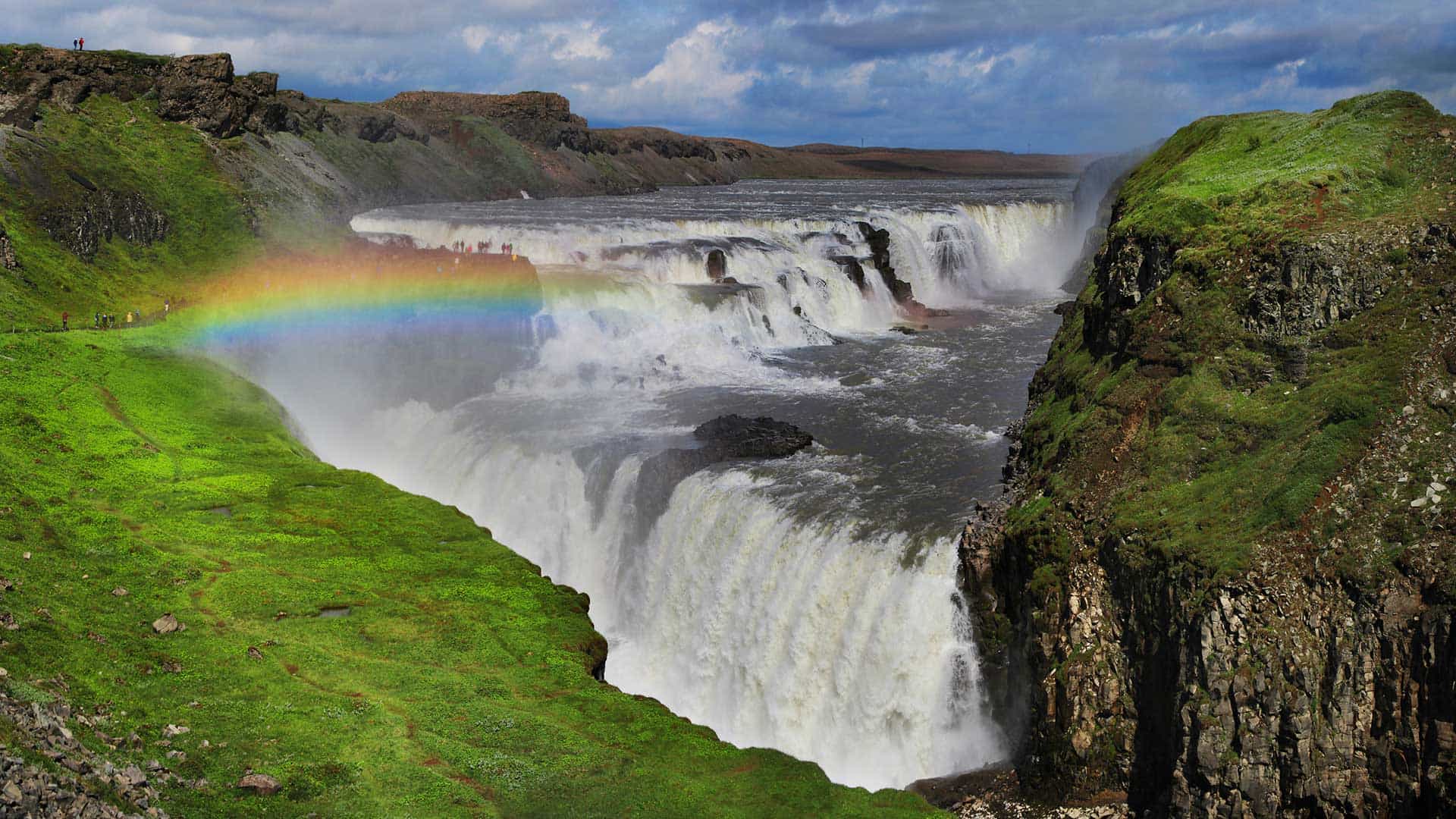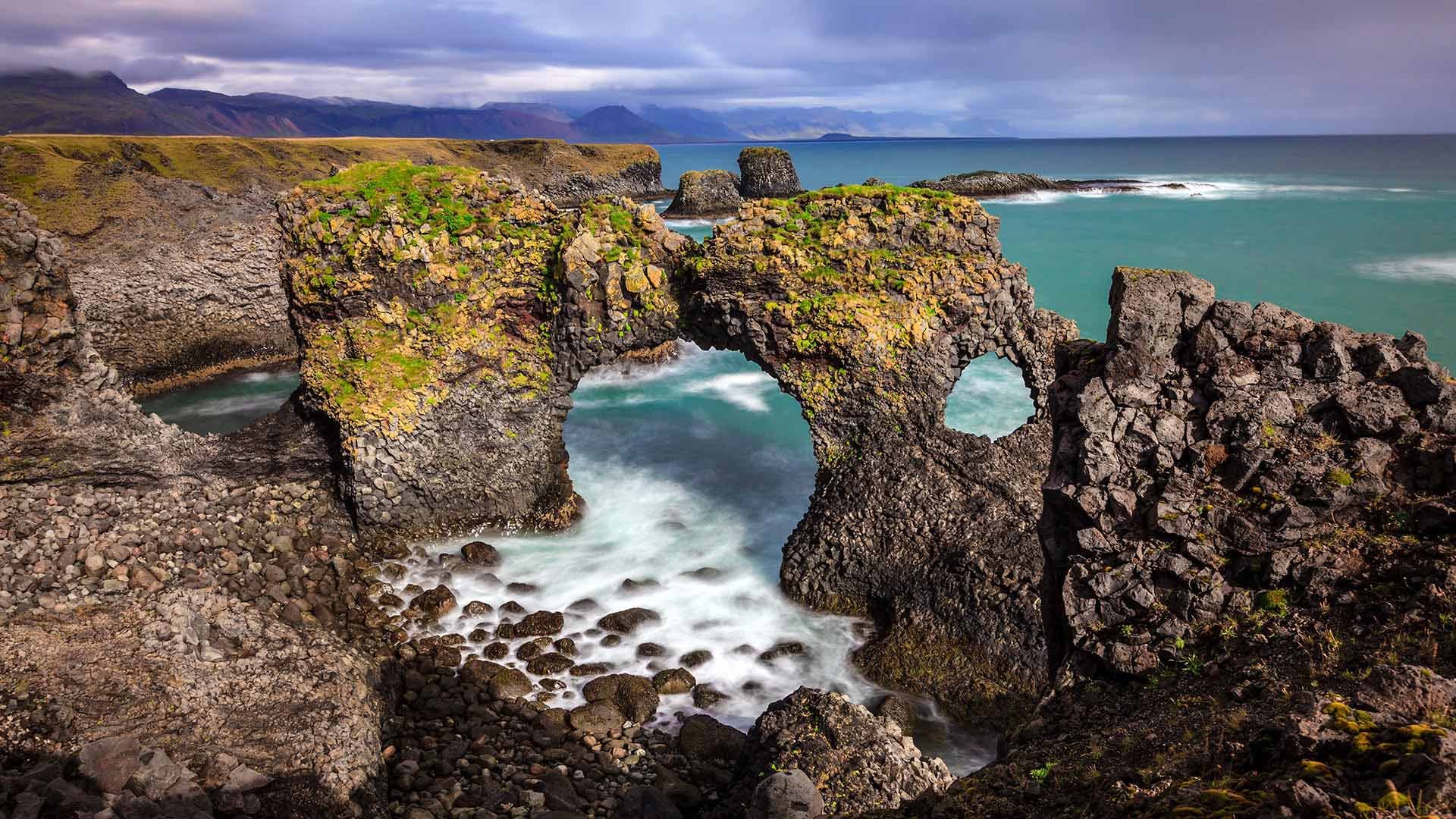One of the best ways to see Iceland is by car, driving around the country’s iconic Ring Road. If you're wondering how long it takes to drive around Iceland, you'll find lots of handy information here.
At Nordic Visitor, our local travel consultants have crafted a number of self-driving tours of Iceland that make road trips around the country easy and enjoyable.
If you’re looking to plan your own driving holiday to this fascinating Nordic nation, read our straightforward guide for insider knowledge.
Driving Around Iceland: How Many Days Will You Need?
When planning a driving holiday around Iceland, the most important factor to plan for is how long the journey will take. Many people want to know if a 6-day or 7-day vacation will give them enough time to see Iceland’s numerous sights.
The simple answer to this question is, "yes".
Ultimately, though, the length of your Iceland road trip will depend upon several factors, including:
- Your desired itinerary
- The season and weather conditions
- Whether you visit areas that aren’t directly accessible from the Ring Road
- How much time you spend in urban areas, as opposed to out on the rural roads
Stick solely to the Ring Road and, in theory, you can drive around Iceland in about 17 hours – road and weather conditions permitting. But we strongly recommend against this for safety and enjoyment reasons.
About Iceland's Ring Road
The Ring Road, also known as Route 1, is the nation’s main artery. Built to connect the settlements on the coast, the road loops around Iceland in a rough circle.
Driving around Iceland on the Ring Road lets you explore at your own pace, enjoying astonishing scenery as you travel from one stunning natural attraction to the next.
It’s worth noting that the interior region of country, the Highlands of Iceland, is largely impassable. Mountain roads here (known as F-roads) can be difficult to drive along and are closed in the winter months. If you want to diverge from the Ring Road to explore the highlands, you’ll need a 4-wheel drive vehicle.
- Find out more about 4WD adventures: view our 4x4 Highland tours.
Distance of the Ring Road
Wondering how far it is to drive around Iceland? In simple terms, it's 828 miles (1,332 km to locals), the length of Route 1.
Of course, the exact distance you travel will depend upon your itinerary. The Ring Road passes through most of the country’s major regions and attractions, but you’ll probably want to get off the beaten track now and again to visit the more remote sites.
Visiting the western Snæfellsnes Peninsula, often described as ‘Iceland in miniature’, requires a diversion onto Routes 54 and 60. This detour will add roughly 170 miles (274 km) onto your journey.
The Westfjords in the northwest require a similar diversion from Route 1, as does any excursion into the highlands.
Iceland driving limits and key stats
The Ring Road is almost entirely paved with asphalt, which means the speed limit for the vast majority of your journey will be 90 km/h.
In urban areas the speed limit is 50 km/h (roughly 30 mph). On rural paved roads the speed limit is 90 km/h (roughly 55 mph). On rural gravel roads the speed limit is 80 km/h (50 mph).
In Iceland single lane bridges are a regular feature of the rural roads – these require you to slow down and allow other vehicles to pass. It’s also common to come across animals (mainly sheep) on the roads, which can cause delays!
- For more detailed info, read this Travel Guide on driving in Iceland.

Ring Road itinerary ideas
To give you an idea of different driving holiday styles and how long they take, here are a few itineraries of varying lengths.
2-3 Days - Not Recommended
Technically, travellers who are seriously short on time could split the circuit across 2 or 3 days, driving for between 6 and 9 hours each day. But ask our local travel advisors and you won't find one person who recommends this approach.
If you only have 2 or 3 days to explore Iceland, try a different experience. Squeezing the drive into such a short period of time seriously restricts options when it comes to where to stop for photos, and where to stay. Plus it doesn’t account for any road closures or diversions.
If visiting for 2 or 3 days, try a Reykjavik city break with excursions, or a series of day tours including the Golden Circle.
- See Iceland’s popular highlights in 3 days, with the Golden Circle Express.
6-7 Days
Touring Iceland over 6 or 7 days is a great way to make the most of the country’s major attractions.
Starting and finishing in vibrant Reykjavík, in Iceland’s southwestern corner, you can head south and then east on the Ring Road, making stops in coastal towns such as Vík and Höfn, and enjoying major attractions such as the Jökulsárlón glacier lagoon.
In the north you can make stopovers at Mývatn, the perfect place to see the northern lights during the winter months, and the tranquil farmlands of Skagafjörður, before heading back south to Reykjavík.
Plan your action-packed week for the summer months and you’ll benefit from all that additional daylight.
10-14 Days
If you want to make the most of Iceland’s many natural splendours, we highly recommend that you spend between 10 and 14 days here. Not only will you be able to travel to areas of the country not accessible from the Ring Road, you’ll have the luxury of time when it comes to photo stops, bathroom breaks (parents: take note!) and mini-excursions.
Spending 10 to 14 days in Iceland gives you plenty of time to diverge from the Ring Road, heading out to tiny coastal towns such as Husavik, the whale watching capital of Europe.
You’ll have the opportunity to tour the Snæfellsnes Peninsula, visiting the ancient Snæfellsjökull National Park, and exploring lava fields, volcanic craters, waterfalls, and picturesque fishing villages.
Best of all, 10 to 14 days in Iceland gives you ample time to immerse yourself in Icelandic culture. Visit tiny Bakkagerði to hear tales of the local elves and fairies. Stop over at Stöng, the replica Viking farm that boasts historically accurate buildings, and learn about the history of these fearsome invaders.
If you’re a keen foodie, a trip of this length will let you experience a rich variety of Icelandic cuisine. Sample fresh cod cheeks, Icelandic lamb, and specialities like harðfiskur (strips of dried haddock eaten with butter). Dine on wild reindeer in the east, langoustines in the south, and local fast food favourites like pylsur (hot dogs) in Reykjavík.
However long you decide to spend in Iceland, remember that your plans may have to change depending on the season. In the winter months, there are only 3 to 4 hours of sunlight per day. Roads can become icy, meaning you may have to drive more slowly than anticipated, and certain passes may be closed in bad weather.
- Explore these package holidays to Iceland for classic routes and itineraries

What Months Can You Drive Around Iceland?
The beauty of a driving holiday around Iceland is that different seasons bring different benefits – meaning it’s an excellent year-round destination. As we’ve already highlighted, driving during the winter months can be tricky, but shouldn’t put you off.
Driving Around Iceland in Summer
High season for Iceland is summer. In June, July and August, visitors are attracted by the promise of endless daylight, scenic hikes, and the ability to access remote passes in the highlands.
Driving around Iceland in July is ideal if you want to avoid trickier weather conditions, or if you’d like to head up into the mountains in a 4WD. It’s worth bearing in mind that if you’re not used to Iceland’s 'midnight sun', you may have to remind yourself to make stops to avoid fatigue.
- Take a look at these Iceland summer tours
Driving Around Iceland in Winter
Low season for Iceland is winter. Mountain roads are closed and some minor roads may be temporarily shut if weather conditions are particularly poor. In addition, daylight is limited.
On the flipside, the key benefit of a driving holiday between November and February is that longer nights provide more chances to spot the northern lights. Winter sports enthusiasts can also take the opportunity to ski, snowshoe, and explore ice caves.
A few considerations for driving between November and February include:
- Driving slowly on icy roads
- Checking up on road closures
- Keeping a paper map and not relying solely on GPS
To make your driving experience safer and easier, you may want to hire a 4-wheel drive. You can also request a rental car with studded winter tyres.
- For more safety advice, read our Iceland winter driving guide.
- Explore our purpose-made winter self-driving packages.
Recommended Ring Road Itinerary
Still seeking inspiration for your driving tour of Iceland? Read on for a suggested itinerary of 7 days and 6 nights that will take you to glaciers, waterfalls, fjords, hot springs, lava fields, and a host of picturesque towns bursting with Icelandic hospitality.
You’ll kick-start your journey flying into Reykjavík’s Keflavik Airport and picking up your rental car.
Day 1: Reykjavík
Spend the day exploring Iceland’s colourful capital. Delve into Viking history, sample Icelandic cuisine, and stroll down Laugevegur, the city’s main thoroughfare, a hotspot for coffee shops, galleries, and boutiques.
Day 2: Golden Circle & the South Coast
Head east out of Reykjavík to Þingvellir National Park, before continuing on to Geysir (famous for its hot springs), and the waterfalls of Gullfoss, Seljalandsfoss, and Skogafoss. Finish up at the spectacular black sand beach of Reynisfjara and spend the night in Vík.
Day 3: Vatnajökull National Park
Drive along the southern coast of this famous national park and come face to face with ancient glaciers. Stop by Jökulsárlón, a lagoon filled with floating icebergs, and the Diamond Beach, which glitters with chunks of shattered ice.
- Related: Ultimate guide to Iceland travel
Day 4: The Eastern Fjords & Lake Mývatn
Follow the Ring Road along the winding fjords of Iceland’s eastern coast, before heading north to Dettifoss, the most powerful waterfall in Europe. Finish up at the volcanic Lake Mývatn, the ideal place to spot the northern lights in winter.
Day 5: The Northern Fjords
After exploring the lava landscapes around Lake Mývatn, head into the charming city of Akureyri to wander through galleries and browse for souvenirs. Finish up the day touring the farmlands of Skagafjörður.
Day 6: Reykjavík
On your final day of travel, drive back to Reykjavík, stopping by the Deildartunguhver hot spring and the waterfalls of Hraunfossar and Barnafoss on the way.
Day 7: Depart
Enjoy one last tour of the capital before dropping off your rental car and heading to Keflavik Airport to fly home.
Your Iceland Self-Drive Checklist
If we’ve inspired you to take a driving holiday around Iceland, then why not get booking? To help the process along we’ve put together a checklist that will help you get all the little details right.
- Rent a car – if you’re travelling during the summer months and sticking largely to the Ring Road, a 2WD vehicle will be adequate. If you’re travelling during the winter months, or if you want to go up into the highlands, a 4WD will be necessary. To explore your options, view our rental car information.
- Plan your route – putting together a detailed itinerary for your trip is a good idea. Incorporate attractions, overnight stops, restaurants, supermarkets, petrol stations, and any areas of the route that might be more difficult to traverse. Take a look at our self drive itineraries.
- Book accommodation – accommodation in Iceland ranges from budget hostels and guesthouses to luxury suites. Booking in advance – particularly during the high season – is highly recommended.
- Book attractions – don’t assume that the attractions you want to see will always be available! Sites such as the Blue Lagoon are incredibly popular and can sell out fast during the high season. There can also be high demand for day tours of the Golden Circle and boat trips on Jökulsárlón. With our tours you always have the option to add optional activities to your booking, such as a Blue Lagoon spa day to wrap up your trip.
- Be aware of driving regulations – in Iceland off-road driving is illegal. You must drive with your headlights on year-round, wear a seatbelt at all times, and slow down when moving from paved to gravel roads. Find out more by consulting www.road.is, a site where you can stay up to date on road and weather conditions.
- Pack wisely – a driving holiday in Iceland requires a few specific items to ensure you stay safe. Using GPS is recommended, but you shouldn’t set off without a hand-marked map. Carry a fully charged phone (the local emergency number is 112) and make sure you have cash or credit cards – VISA and Mastercard are widely accepted.
Remember, Nordic Visitor is a travel service that offers a variety of easy and enjoyable self-drive tours. If you’d rather spend your time reading up on cuisine and history than getting stressed over itineraries and learning the Icelandic word for “petrol station”, make a booking with us.
In addition to self-driving tours, which are planned, organised, and supported by our dedicated staff members, we also offer Ring Road guided tours. Sit back, relax, and take in the unbelievable sights as you’re driven around Iceland in style.
